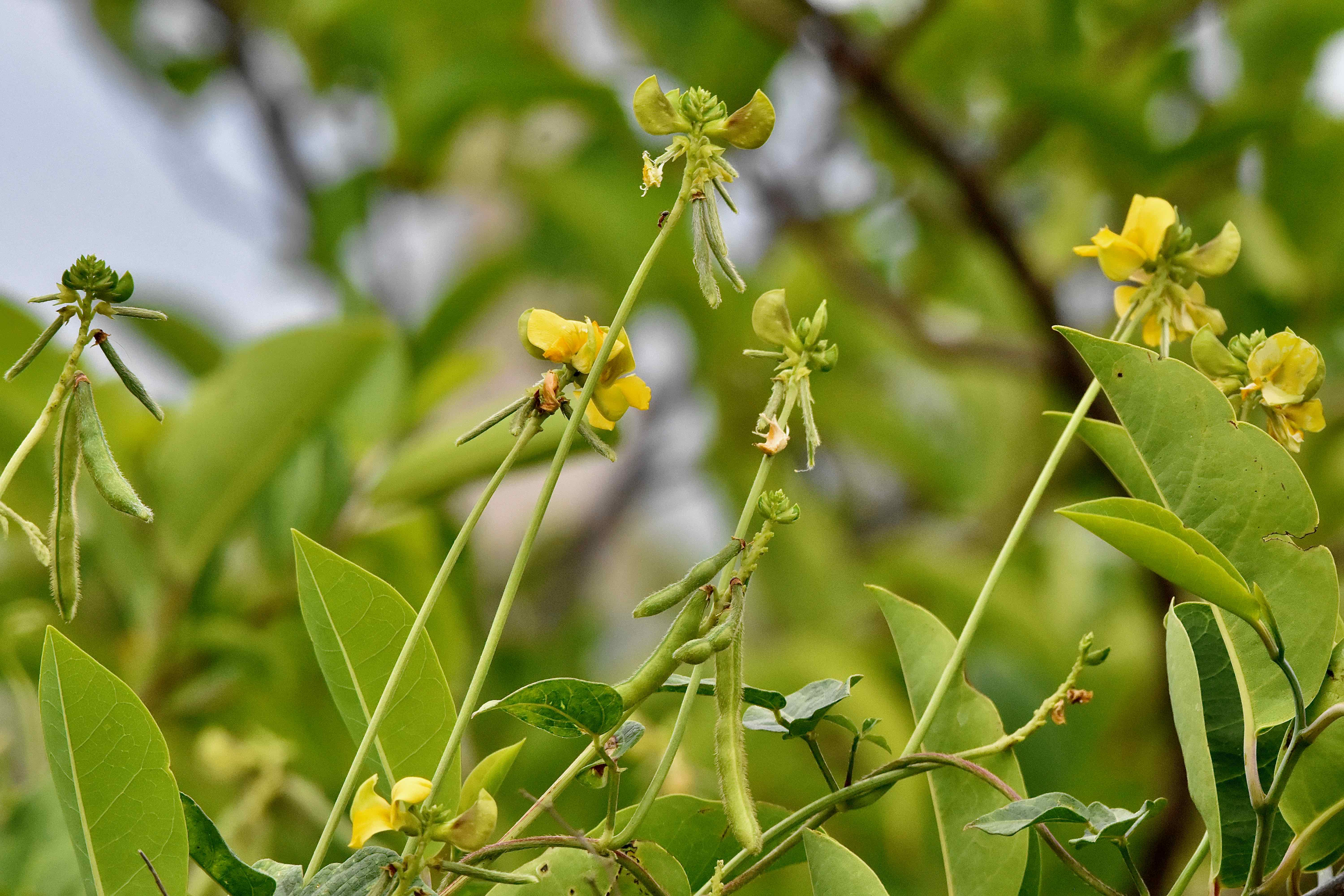
Hairypod cowpea, photographed at Peaceful Waters Preserve, Wellington, Palm Beach County, in March 2017.
Hairypod cowpea, Vigna luteola, is edible but there is no evidence that consuming it on New Year's Day with pork and sauerkraut will bring good luck. For that, you'll have eat one of its relatives, Vigna unguiculata, commonly called cowpeas or blackeyed peas.
The first part of the name is descriptively straight forward: hairypod cowpeas do in fact have hairy seed pods. It also answers to deerpea, wild cowpea and yellow vigna. The second part of the name is a little vague. Cowpeas, including the aforementioned black-eyed peas, are native to the Old World, primarily Africa and Asia and were brought to this country as food for humans, but our guy, hairypod, is a not an import. The word, "cowpea," is American in origin, however, its usage first appearing about the time of the Revolution.
Hairypod cowpea's native range includes the southeastern United States from Virginia to Texas, even as far north as parts of Pennsylvania. It is found in most of Florida's 67 counties. Favorite habitats include pinelands and coastal uplands, particularly the Peninsula. In places, it's an extremely common plant.
It's also found in Mexico, Central and South America. Some say it originated in coastal parts of Africa and somehow made its way westward across the Atlantic. To be considered native, however, it had to be growing on our fair shores before the arrival of the first Europeans.
It's also found in Asia and parts of the Pacific, including Hawaii, where it was a staple of the traditional medicine cabinet.
Hairypod cowpea is a small vine that will trail along the ground or twine itself among nearby vegetation. The literature says it will top out about four feet, but we've seen it a few feet more off the ground. It has compound leaves, each with three oval to lance-shaped leaflets.
The flowers are bright yellow and appear in small clusters. The fruit is small, thin, hairy pods that have a series of indentations created by the seeds. When mature, the seeds are about five millimeters long and reddish brown in color. In the north, hairypod cowpea is an annual, blooming in spring and summer and fruiting in the fall. Here in South Florida, it is a perennial, blooming year-round.
It's usually found relatively close to the coast, the biggest documented exception, according to the U.S. Department of Agriculture's PLANTS database, is Bedford County in mountainous south-central Pennsylvania. Pinelands, coastal uplands and disturbed areas, such as roadsides, are primary habitats.
It is a tough plant. It likes full sun, tolerates livestock grazing, the occasional fire, periodic flooding and drought. It tolerates salt wind and doesn't need much in the way of nutrients. In fact, it is a legume, meaning it actually returns nitrogen to the soil.
Hairypod cowpea is a host plant for several butterflies, including the cassius blue, gray hairstreak, long-tailed skipper and dorantes skipper. Some birds will forage for the seeds.
Hairypod cowpea might not bring the consumer good luck but it's full of good stuff. It's about 17.5 percent protein and particularly high in an amino acid called cystine, which is a component in hair and skin. The body uses it to make an antioxidant called glutathione. It also plays a role in the immune system. Hairypod cowpea flowers can be eaten raw or cooked, and the peas boiled. In Malawi and Ethiopia, the flowers are cooked and eaten as a vegetable. Children in Malawi also peel and chew the roots. In Hawaii, it's been used as a skin aid, as a treament for asthma and as tonic for mothers and children.
Hairypod cowpea is a member of Fabaceae, the pea family.
Peaceful Waters Preserve
Click on photo for larger image
U.S. Department of Agriculture Distribution Maps






